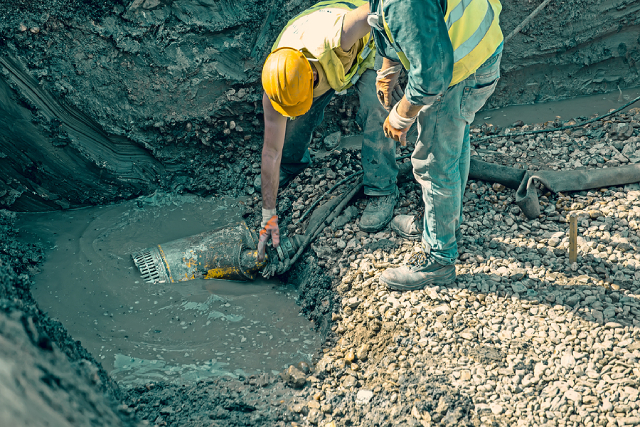3 Major Challenges Of Construction Site Water Removal

Water removal is a major temporary pump application on construction sites. Operators can usually encounter water during infrastructure installation in the development of industrial or residential areas or while operating at the job site foundation. There are numerous methods for setting up the equipment in a pump application, but they all have two critical elements in common.
The downtime of dewatering pumps can result in serious safety problems and affect the productivity of every contractor on site. On the other hand, the second element comes in an unpredictable increase in cost. More necessary than ever, leading pump manufacturers are now looking for solutions to reduce machine downtime and increase productivity.
Read on to learn more about the significant challenges of removing water on construction sites.
1. Choosing the right dewatering pump
Most of the time, dewatering pumps are sized and chosen according to particular application parameters connected with the static discharge head, suction lift, hose/pipe setup, and required flow rates. This sizing criteria often become redundant due to the deviation of the on-site condition from its initial parameters.
When the operators have no technical documentation for reviews and the dewatering pumps operate on their Recommended Operating Range (ROR), a series of pressure gauges can provide them with a reference. Operations beyond the ROR can lead to excessive wear, pump malfunction, and inefficiencies.
A vacuum gauge on the pump’s suction port specifies the inlet pressure. With the pump in operation, the indicator helps identify the actual friction losses in the suction line. Moreover, the pressure gauge’s discharge signifies the pressure necessary to manage the static discharge head and overcome friction losses that occur while the water travels through the pumping system.
The sum of the discharge head, suction life, and friction losses is the so-called Total Dynamic Head (TDH). This TDH and the recognised flow rate indicate the pump system’s duty point. Remember that knowing the duty point by reading the dewatering pump speed and the pressure and vacuum gauge values is vital to avoiding malfunction, downtime, and high operating costs, especially if you work in the recommended operating range.
Another major challenge in construction site water removal is finding the right pump to prevent clogging while dewatering the site. Usually, big pieces go inside the dewatering pump volute but do not go out and cause inadequate flow rates instead. These situations happen when the recommended suction strainer has not been installed. To remedy the situation, a swift response is critical.
The first critical action is to eliminate every piece that obstructs the flow through the whole pump system. The swing door of a pump, if applicable, enables quick access to pump wear components and facilitates the safe removal of the obstacles. Note that installing a suction strainer is highly advised to avoid clogging.
Ideally, the suction strainer should have an overall open area 5 times bigger than the suction line’s open area. It should also be corrosion-resistant and robust in construction. Essentially, high-performance pumps equipped with smart design features always accelerate dewatering applications.
3. Saving operating costs
One of the most frequently asked questions about dewatering pumps is how long they can run dry. Dry running refers to the condition of an operating pump without the media or liquid to be pumped. For this, letting the liquid flow inside the pump is highly recommended, as flowing liquid allows the parts affected by friction and heat production to cool down. Moreover, it helps lubricate the mechanical seal.
Another simple but effective way to prevent dry running is installing a level regulation system. The so-called “auto-start mode” will run the pump according to the required level and behaviour. Ultimately, running the pump only when needed will bring numerous benefits, such as the maintenance interval’s extension that has direct savings in service expenses, daily fuel savings, and a cutback of the carbon footprint of various components.
Conclusion
The things mentioned in this article are only some of the most common challenges of removing water on construction sites. Like any other heavy-duty equipment, such as air compressors or high pressure washers in Singapore, dewatering pumps come with various complexities.
Following the recommendations shared in this article will make it easier for operators to overcome the challenges that arise from construction site water removal. For better solutions, it is also highly advised to seek the assistance of a professional who specialises in the operations of dewatering pumps, submersible pumps, turbine pumps, and other industrial pumps.

